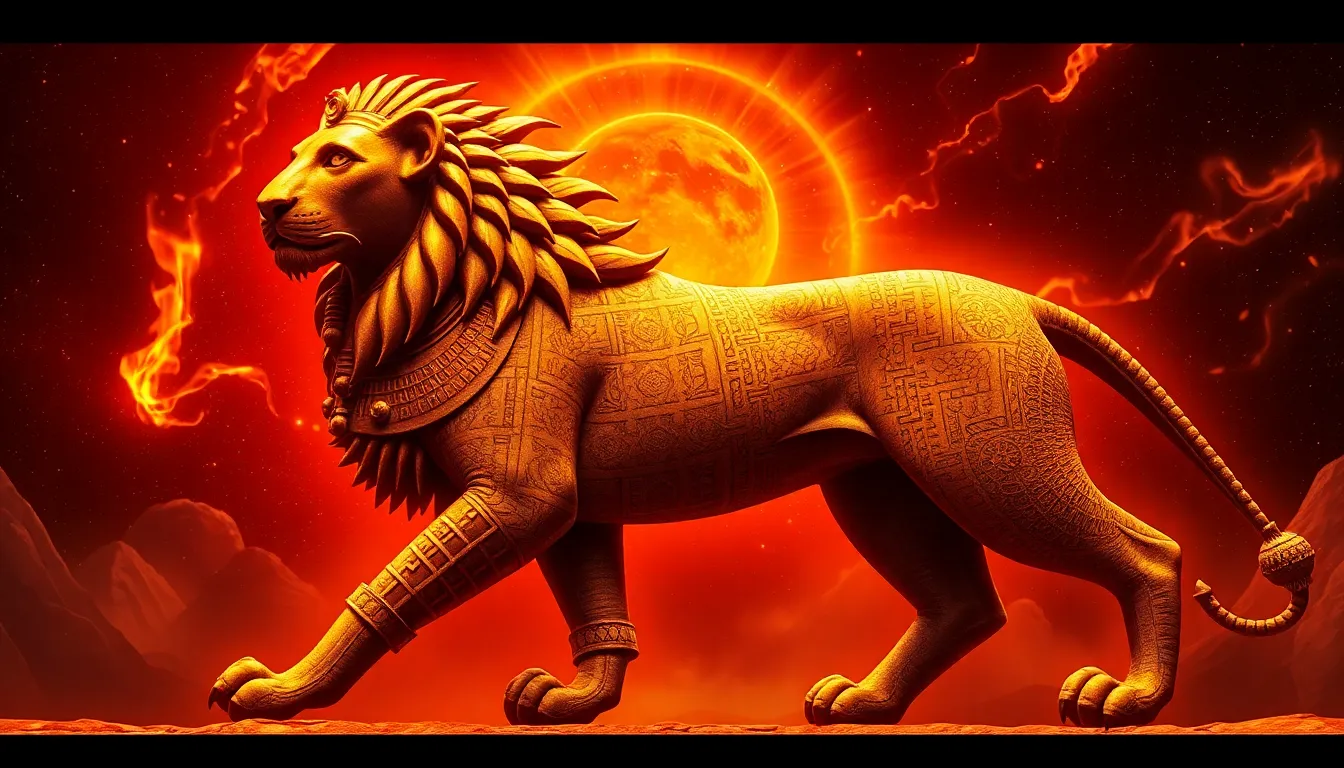The Geography of the Sacred Lion: Myths of Ma’at
I. Introduction
In ancient Egyptian culture, Ma’at represents the fundamental principles of truth, balance, and justice. It is not merely a concept but a guiding philosophy that permeates every aspect of life and the cosmos. Central to the understanding of Ma’at is the lion, a symbol that embodies power, protection, and the divine. This article explores the interconnectedness of geography and mythology, focusing on how the sacred lion is woven into the fabric of Ma’at and its significance in ancient Egyptian society.
II. Understanding Ma’at: Concept and Symbolism
Ma’at is defined as the ancient Egyptian concept of order, truth, and justice, which governs the universe and human society. Its importance can hardly be overstated, as it was integral to the stability and prosperity of the Egyptian civilization.
- Truth: Ma’at embodies the truth that sustains the universe.
- Balance: It represents the balance between chaos and order.
- Justice: Ma’at signifies the moral integrity required for a harmonious society.
Symbolically, Ma’at is often represented by a feather, which weighs against the heart of the deceased in the afterlife. However, one of its most potent representations is the lion, a creature that embodies both ferocity and guardianship.
III. The Sacred Lion: An Overview
Lions held a significant place in ancient Egyptian culture, revered not only for their might but also for their symbolic representation of divine authority. Various deities associated with lions underscore this cultural significance:
- Sekhmet: The lioness goddess of war and healing, known for her fierce nature.
- Mafdet: The goddess of justice and execution, often depicted as a lioness.
The lion symbolizes protection and power, serving as a guardian of Ma’at. It was believed that these deities would protect the pharaohs and the land, ensuring that order prevailed over chaos.
IV. Geographic Context: The Lion in Egyptian Landscape
Different regions of ancient Egypt were associated with lion mythology, reflecting the geographical influences on religious practices. Key areas included:
- The Nile Delta: Known for its rich fertility, it was a central location for the worship of lion deities.
- The Western Desert: This harsh landscape was often depicted in myths as the realm where lion deities roamed.
The relationship between geography and the worship of lion deities is evident in the sacred sites and temples dedicated to these gods. Many temples were strategically located near lion habitats or in areas symbolically linked to the lion’s prowess.
V. Myths and Legends of the Sacred Lion
Ancient Egyptian mythology is rich with stories involving lion deities. Some key myths include:
- The Slaying of the Serpent Apep: Sekhmet’s role in defeating chaos represents her embodiment of Ma’at.
- The Protection of the Pharaoh: Lions were seen as guardians of the king, ensuring the stability of the kingdom.
In the story of Sekhmet, her fierce nature serves to protect Ma’at by punishing wrongdoers, illustrating the duality of creation and destruction inherent in the lion symbolism. Interpretations of these myths vary across different regions of Egypt, often reflecting local beliefs and geographical contexts.
VI. The Intersection of Geography and Mythology
Geography played a significant role in shaping the development of lion myths. Specific locations held particular significance in lion legends:
- The City of Memphis: Known as a center of worship for Sekhmet, reflecting its geographical importance.
- The Temple of Karnak: A site where lion deities were honored, located near the Nile, which provided sustenance for the people.
Regional variations in the portrayal of the sacred lion highlight how geography influenced local mythology. Different tribes and communities adapted the lion’s symbolism to fit their cultural narratives, enhancing the richness of Egyptian mythology.
VII. The Legacy of Ma’at and the Sacred Lion in Modern Culture
The influence of ancient Egyptian mythology, particularly related to Ma’at and the sacred lion, extends into contemporary society. Today, we see:
- Art and Literature: Many modern works draw inspiration from the themes of balance and justice represented by Ma’at.
- Symbolic Representations: The lion continues to be a powerful symbol in various cultures, representing strength and protection.
In modern Egypt and beyond, the preservation of lion mythology is evident in artistic expressions and cultural references, reflecting the enduring legacy of these ancient beliefs.
VIII. Conclusion
The intricate relationship between geography, the sacred lion, and Ma’at reveals the depth of ancient Egyptian mythology. From the fierce protector Sekhmet to the tranquil balance of Ma’at, these symbols continue to resonate in contemporary culture. As we reflect on the relevance of these myths today, it becomes clear that the power of symbols transcends time, anchoring cultural memories and values that continue to shape our understanding of justice, truth, and order.




